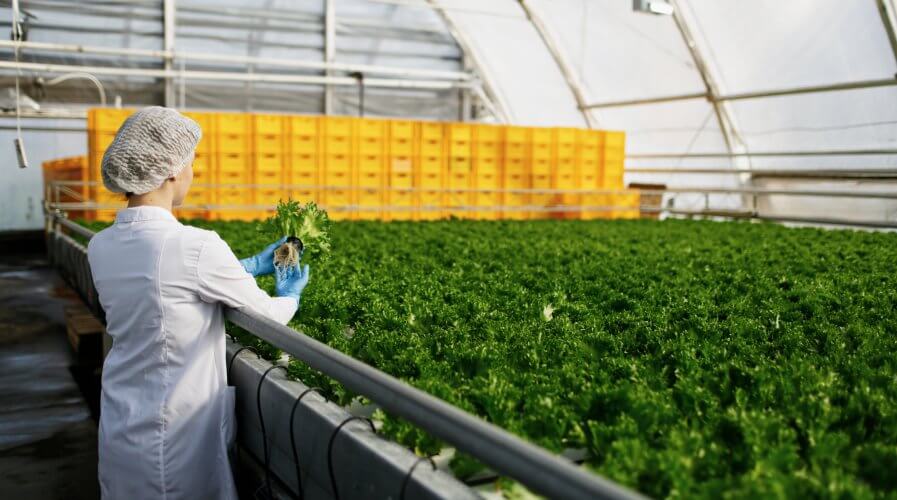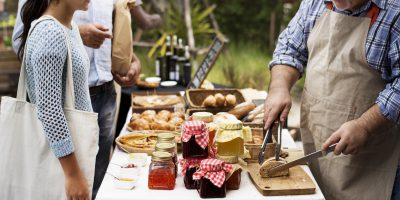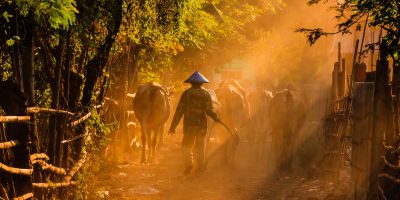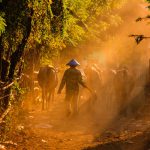
Singapore’s government wants more innovation in farming, but is it ready? Source: Shutterstock
Here’s why technology could be a double-edged sword for agriculture
MUCH HAS BEEN MADE of the impact of technology and its capability to drive high growth and amazing results in short periods of time, but there’s a big question mark as to whether or not everyone should be jumping in to incorporate the latest and greatest technologies promising the sun and the moon for their bottom lines.
This was especially true when you think about some pretty expensive systems, such as machine learning and automation programs meant to take off the slack on human employees. These are great systems that can have a real monetary cost to them that might not necessarily be beneficial to the company if it results in driving up costs.
Executives and decision makers in companies need to really focus on what tech will work positively for their companies, especially if there isn’t any significant ROI to speak of.
A farm in Singapore drew particular focus on the issue, as the owners battle with whether or not to bring in technologies that could potentially benefit their business. The Jurong Frog Farm, the only place in Singapore that breeds American bullfrogs, is weighing the wisdom of integrating a new recirculating aquaculture system that could help them continue their business should they be moved off their current land when their lease ends.
The problem at the heart of it is that the Singaporean government is implementing a new policy that would weigh farmers’ adoption of sustainable and productivity-boosting technologies as a factor in the land-lease bidding process.

Some farms in Norway and overseas are experimenting with indoor farming. Source: Shutterstock
A tender released in August will evaluate bids partly on the basis of these farmers’ ability to harness innovation and sustain production, a challenge for many small, independent farms that may not be able to afford such investments.
According to the farm directors, the aquaculture system – which relies on a single stock of water that is repeatedly treated and recycled – could cost hundreds of thousands of dollars as it’ll need to be refitted to suit the needs of a frog farm. Estimates and initial sums indicate that the small farm would not be able to afford such an investment, and it could actually set them back, according to farm director Chelsea Wan.
“Even with government subsidies at implementation, the running cost of such a system might force us to eventually pass on costs to customers, who may simply turn to other farms in the region, which have plenty of land and water,” she told the Straits Times.
As the only American bullfrog supplier in Singapore, the loss of the Jurong farm could affect sources of live frogs and frog meat to consumers in the nation state. Wan said that she was looking into other low-tech solutions, including relying on sources in other countries with the necessary land and resources.
Regardless, her story is emblematic of a little-discussed problem: what happens when tech doesn’t work?
Let’s set the record straight first: technology can make a huge difference for many players in many industries. It has worked wonders for the financial industry, as well as those in logistics. However, not all industries are made the same, and agriculture is a particularly sensitive one especially since it deals with food sources.
However, as with the Jurong Frog Farm example, the swift introduction of technology into an important and fragile industry could prove dangerous, especially since outcomes have significant impacts on livelihoods and welfare. For instance, the introduction of new production management systems or new fishing cages may have affected fish supplies.
According to Singapore’s Agri-Food and Veterinary Authority (AVA), local fish stocks fell from 5,272 tonnes in 2015 to 4,851 in 2016.
All things considered though, technology could still bring massive improvements to agricultural output in the long run. The AVA said the fish farms will likely see improved results in the future once snags in the system have been smoothed out.
A spokesman for the agency said that the new technology could see the implementation of sensors and robotics that will be able to automate menial tasks such as net cleaning, which will boost efforts to increase fish farming system threefold sometime down the line.
The integration of technology into farming may also not be a matter of personal choice anymore, though, as climates globally shift, thus creating havoc in our natural ecosystems and disrupting agricultural production.
“Agriculture is sensitive to weather conditions. Climate change may impact food supplies,” said climate scientist Benjamin Grandey to the Straits Times. He works at the Singapore-MIT Alliance for Research and Technology.
Technology may be a way to fend off the harsher effects of climate change on our food sources. Farms in countries like Norway are already introducing new best practices such as closed containment systems and indoor farming systems to mimic natural environments without the dangers of being exposed to extreme weather.
“We cannot control the weather. But we can control how we want to manage the risks,” said a senior minister for National Development, Dr Koh Poh Koon, in a Facebook post.
“I urge all our farmers to work together with government agencies to transform our farming sector into a more resilient and productive one. Your long-term viability and our food security are intertwined.”
READ MORE
- The criticality of endpoint management in cybersecurity and operations
- Ethical AI: The renewed importance of safeguarding data and customer privacy in Generative AI applications
- How Japan balances AI-driven opportunities with cybersecurity needs
- Deploying SASE: Benchmarking your approach
- Insurance everywhere all at once: the digital transformation of the APAC insurance industry






